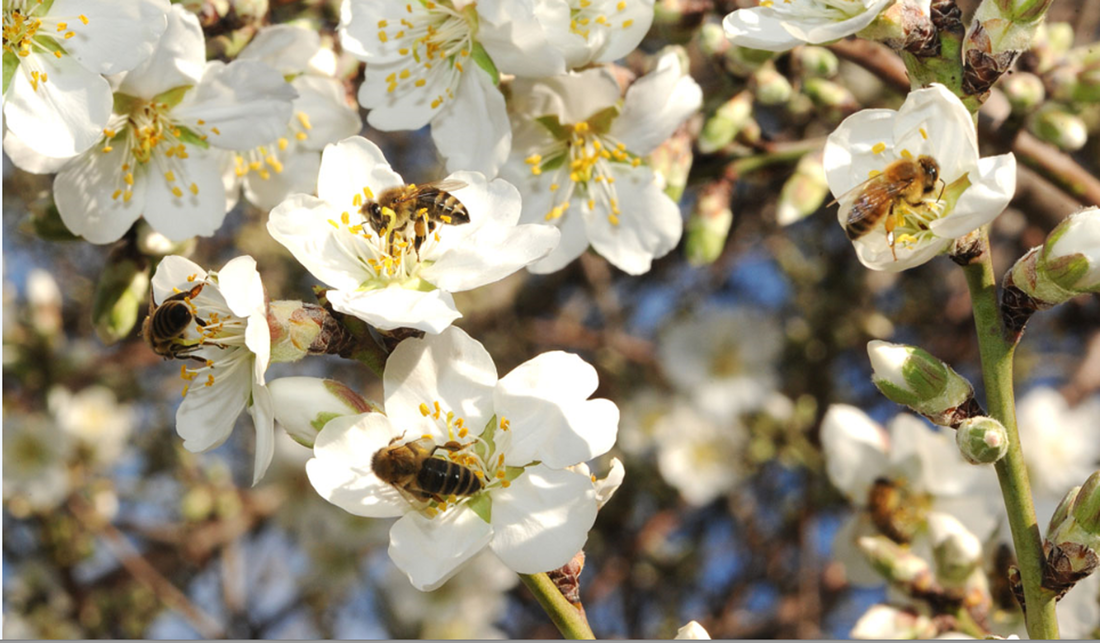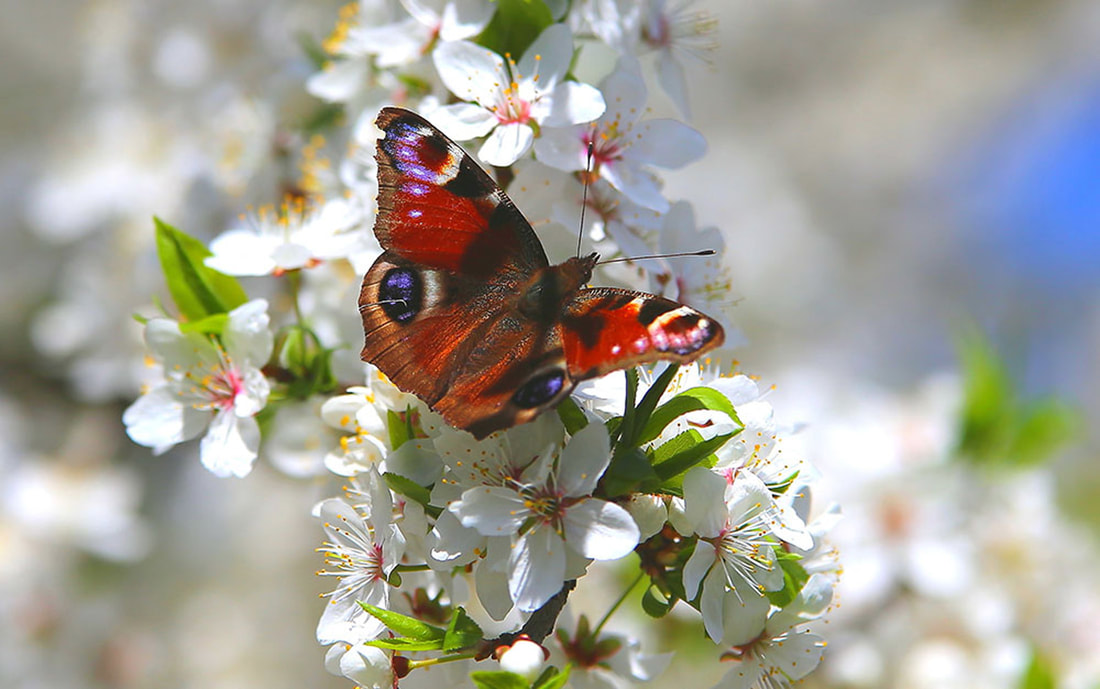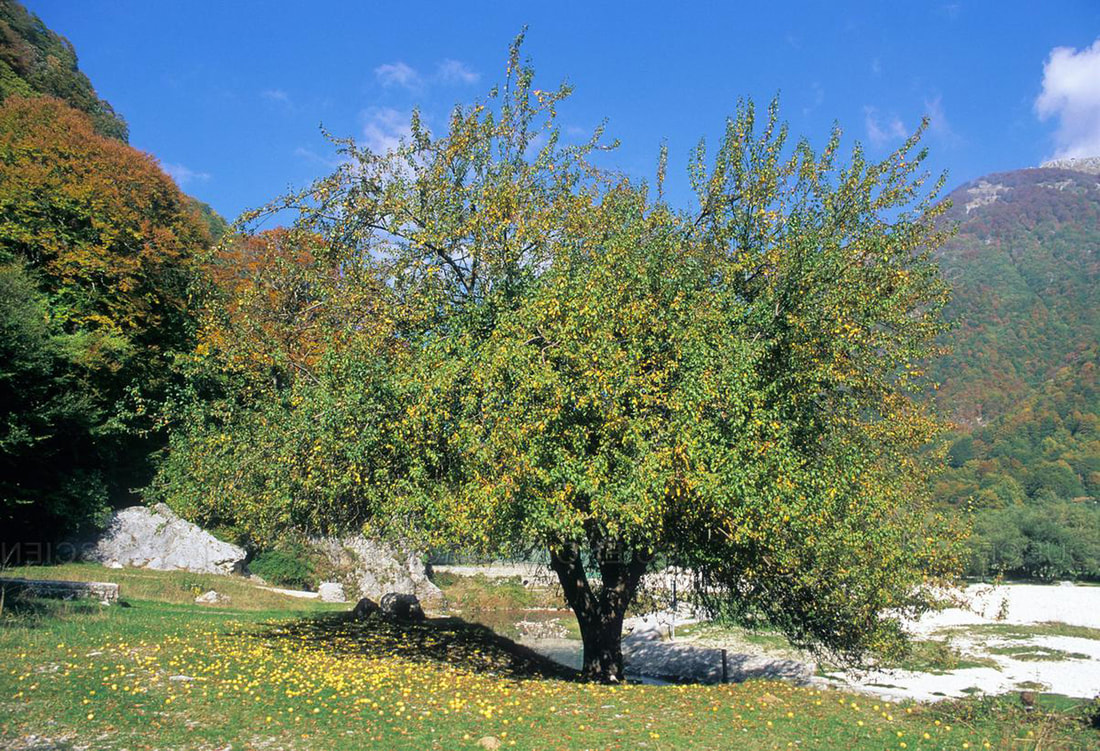|
Pollination comes primarily from native insect pollinators such as bumblebees, mason bees, solitary bees, beetles, flies, moths and butterflies. Flowering plants attract pollinators which leads to bountiful harvests of fruit, seeds and nuts. Although pollen is carried by the wind, and some plants are self-pollinating, about 90% of flowering plants require assistance for pollination. This natural cycle can be used by us to ensure that fruit and vegetables that we plant can be pollinated too. Bumblebees, solitary bees, butterflies and many other pollinators emerge at the first sign of warmer weather but pollen and nectar can be hard to come by. The first flowers to appear each spring are especially valued since they help to establish a resident polllinator presence which is needed throughout the growing season. Even some plants others class as weeds such as common willows and dandelions provide valuable nectar early season pollen and nectar Many insect species have been hibernating since autumn, and when they come out – this can be any time from February to April, they need food for energy. Since fruit trees bloom in early – mid spring, these early season pollinators are highly valued in orchards. Fruit trees have different blooming schedules over a 26 week period and may each be in flower for only a week or two. If it rains during this time, the opportunities for wind-borne pollination are reduced, and we need all the help we can get to facilitate pollination. The more pollinators that can be attracted to the garden in early spring the better. The important thing to remember when choosing is to use local native plants if at alll possible. Native plants are four times more attractive to native pollinators than exotics. Plant flowers in clumps as flowers of the same species which are clumped together will attract more pollinators than individual flowers scattered throughout the garden like litter Plant flowers with different shapes as different species of bees and bumblebees have different tongue lengths and favour flowers specific to their anatomy. A variety of sizes and shapes of flower will attract a corresponding variety of bees and pollinating insects. Over the years, a few favourite flowering stalwarts have proven to be reliable attractors of pollinator insects such as bees, bumblebees and hoverflies and these choice plants have several things in common. They are among the earliest blooming plants each spring, they are perennial, and they have many small flowers in clusters. Calluna vulgaris - Heather Also known as Ling, this well-known perennial and low growing shrub grows abundantly on acid soil over mountains, moors and bogs throughout Ireland. Its blossoms paint the landscape with a pale purple from July to October, its tiny 5mm long bell-shaped flowers growing in abundant spikes and its dark-green, scale-like leaves in pairs along the slender stems. As you walk by, the heather plants seems to come alive with buzzing, as scores of bees and bumblebees seem to appear from nowhere. Actually they were quietly combing the heather and the movement disturbed them but the quickly settle back down to work. Easy to grow in areas of acidity, it has a clumping conformation, with thousands of small flowers which can occupy many bees at once. For winter flowering heathers, choose Erica carnea and cultivars - a species from central and southern Europe, they flower from November to March, will tolerate a wide range of soils and will give early pollen when little else is around These perennial plants are also hardy and low maintenance, they may need a trim after flowering or a cutting back once in a while, but otherwise they are easy to grow and keep. Some will even repeat flower. Ribes sanguineum - Flowering currant Although I grow the white form the most commonly planted is the red flowering form. An early-season flowering shrub, it brings a welcome display of drooping flowers to herald the new spring. Ribes have three features of merit – it grows well in most areas without needing any special treatment, it is naturally deer-resistant so we can grow it outside the fenced garden area, and it is a magnet for attracting pollinators. It is, however, a tall and rangy shrub that can reach about 2m in all directions, and it needs to be pruned back every year or so to keep it in check. Muscari - Grape Hyacinth The charming little grape hyacinth is one of the earliest garden flowers to bloom in spring. Planted in the autumn as bulbs, the spikes of its tiny, downward-facing, bell-shaped flowers are ideal for attracting pollinators to the garden. The flower colour varies from pale blue to a very dark blue, and provides a showy early spring display welcome to the gardener as well as the bees. They do well in sun or shade and are commonly planted as borders or in containers and are ideal when planted in clusters adjacent to vegetable beds or in rock gardens. Malus Domestica - Crab apple The crab apple is one of the ancestors of the cultivated apple and mature trees grow to around 10m in height, thrivesbest in heavy, moist, well-drained soil and areas of scrub. They grow throughout Europe., have an irregular, rounded shape and a wide, spreading canopy. With greyish brown, flecked bark, trees can become quite gnarled and twisted, especially when exposed, and the twigs often develop spines. In spring, the sweetly scented blossom is pollinated by bees and other insects, which then develops into small, yellow-green apple-like fruits, around 2-3cm across. The trees are often planted in commercial orchards as their long flowering period makes them excellent pollination partners for cultivated apples. Interesting facts The crab apple unlike many trees, grows singly and sometimes woods will only have one tree, it is one of the few host trees to the parasitic mistletoe and in Ireland a yellow dye was extracted from the bark to colour wool. Hyacinthoides Non-Scripta - Bluebell One of Ireland’s most familiar and striking wild flowers, bluebells are found all over the country, there is nothing quite like a vibrant carpet of bluebells when taking a spring walk in the woods, the display of the flowers en-masse can be breathtaking. The fragrant, bell shaped flowers that give the plant its name stand upright when in bud, but hang downwards when fully opened to nod gently in the spring breeze, ranging in colour from the familiar violet-blue to white, and even pink on rare occasions. Bluebells flower from early April to June, making the most of the fact that the woodland trees above have yet to develop their full canopy of leaves. Plenty of light still reaches the forest floor, and the bluebells are quick to exploit it. The flowers attract a host of insect pollinators, which makes them particularly valuable to a wide range of wildlife. Bluebells are often grown to give the garden a woodland feel, or as part of a cottage garden. Plant them in drifts around the base of trees and the pollinating insects will thank you later. They like dappled shade and slightly moist soil and are best planted as bulbs in the autumn. Bees and other pollinating insects are declining in numbers due to the loss of habitat, parasites, and pesticides. As gardeners and lovers of wildlife, we can help restore pollinator populations by observing the activity in our gardens, and catering to their interests by planting the flowers they prefer. In return, pollinating bees and insects ensure the vitality and productivity of our gardens. It can be a beautiful and rewarding relationship.
1 Comment
|
WildEdges
A haven of quiet countryside highlighting issues affecting the natural world. Categories
All
|








 RSS Feed
RSS Feed